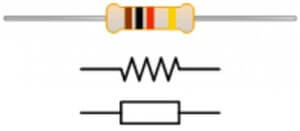Followers
Blog Archive
follow us
Popular Posts
-
How Capacitor works? Animation and Analogy The simplest capacitors are big plates of metal close to each other bu...
-
5 easy ways to earn money online faster 2017 E arning money o...
-
Learn how to make an 8x8 LED matrix controlled by an Arduino. Scroll down further for step by step photos and more details. You’ll ne...
-
Best apps released on 2017 This are the best apps where personally tested and posted on this webpage.This apps are the best in 2017.If ...
-
9 easy free Ways Increase YouTube Video Views If the goal of your video is to rack up YouTube views, you have some tough compe...
-
North korea new support : Russia will act with china & india to protect kim in ww3 Recently russia has given an news that there are g...
-
8 Game Hacker Apps for Android 2018 By Markhan Game Lovers??. Today is a lucky day for you. Because in this Post we a...
-
Whatsapp delete for everyone feature 2017 W hatsapp has introduced a new feature for that we are waiting for a ...
-
How to Download Amazon Prime Video on PC and Mac for free and easy With more and more excellent TV series, music and movies appearing o...
-
how resistor work? What is resistor? The resistor is an electronic component restricts or limit the flow of current and divide...
Friday, 16 February 2018
Wednesday, 14 February 2018
9 easy free Ways Increase YouTube video Views
- Feature it on your YouTube page. Right after you’ve added your video to YouTube, make sure your video the featured video on the front page. People looking at your organization’s YouTube page should be seeing your most current video. It makes your organization look up to date, current and relevant, and puts the video at the center of the YouTube user’s attention.
- Choose a good thumbnail. If you allow YouTube to automatically choose your thumbnail, it probably won’t be very interesting. Use your computer’s screenshot feature to capture an image from your video that is emotionally compelling, and upload it in your video settings.
- Make your title short and interesting. Your video title should not necessarily describe your video in a way that makes sense to your administration. Make your title viewer-centric, and think about what would make you want to click on a video. (Upworthy headlines are a good source of inspiration.) And try to keep it brief – a shorter title that doesn’t get cut off is better for click-throughs. Here are a few good title examples from YouTube star PewDiePie for Charity Water and the Sierra Club.
- Pick tags that will be good for SEO. Your constituents are using YouTube as a search engine – so you should be too! Think about what your supporters are searching, and make sure those keywords are included in your video tags. Keep in mind that what people are searching aren’t always an accurate description of the video.
- Write a good video description. In your video description, consider telling people a story instead of describing what’s happening in the video. Be entertaining, and remember that the description area is not the place to hit messaging points. PETA does a good job of video description storytelling in their video “Circuses in 60 Seconds Flat.”
- Take advantage of the nonprofit annotations on YouTube. It’s amazing how many people don’t know about video annotations – we were telling nonprofits how to use them all the way back in 2009! Annotations should come up at least 30 seconds in to your video and right before the end of the video, and should provide a link where people can take action. And don’t forget to check your links to make sure they’re going to the right place!
- Upload a transcript of your video in English and Spanish. About 38 million people in the United States speak Spanish. By uploading transcripts of your video in both languages, your video will start appearing in English and Spanish YouTube searches. Transcripts alert YouTube of what keywords are featured in your video, and greatly increase the likelihood that your audience will find you via YouTube search.
- Post early and often. People don’t click on every link that’s posted by on an organization’s social media platforms. Make sure you’re continuing to post your video regularly for at least a month, and keep your posts fresh by changing the headlines and images you feature. This will include your viewership dramatically by increasing exposure to new audiences.
- Add a lightbox or pop-up on your website. A video is a great opportunities to let people know more about your organization, regardless of why or how people are coming to your website. If you don’t have a lightbox, make sure your video is featured somewhere on the homepage of your site. Negotiate website placement ahead of time, since it can be a space that is coveted by other departments. Your video deserves to be highlighted. It’s new content and your biggest fans would love to see it.
How To Make An 8x8 LED Matrix display with arduino | techmodernize
Learn how to make an 8x8 LED matrix controlled by an Arduino.
- You’ll need the following parts: a prototyping board, (2) 8 pin headers, (8) 200 ohm resistors and (64) red LED bulbs.
- Arrange the LEDs in the board according to the design you’ve chosen: either common row anode or common row cathode.
- Solder the LEDs to the board, being careful to not to cross any of the anode or cathode leads.
- Attach the 8 pin headers to feed power to the LEDs, be sure to place a 200 ohm resistor in line with each positive power lead.
- Test your board for continuity with a multimeter.
- Attach power to the 8 pin headers.
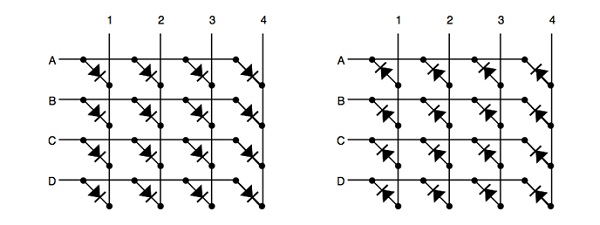
To build this matrix, we will need a few things to get us started.
2 – 8 Pin Headers
8 – 200ohm resistors
64 – Red LEDs
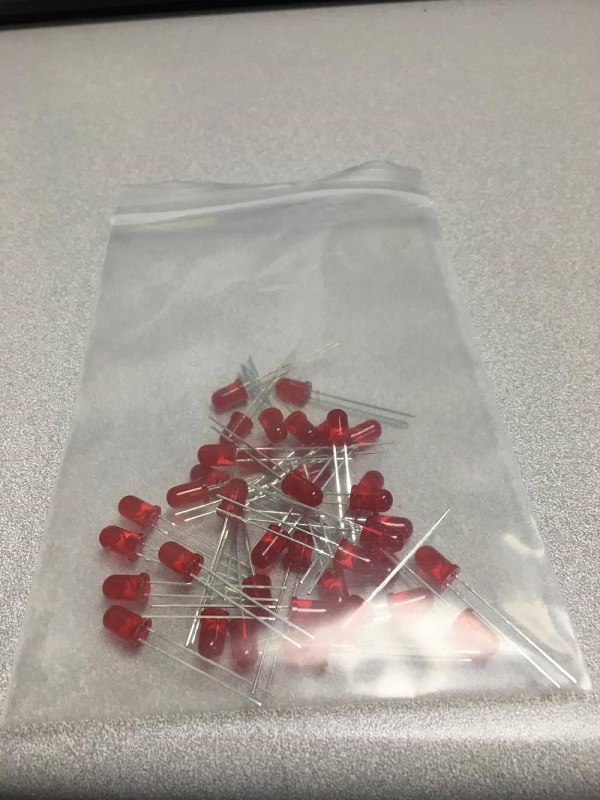
 Or, you could always give it a quick test! Make sure you use a resistor!
Or, you could always give it a quick test! Make sure you use a resistor!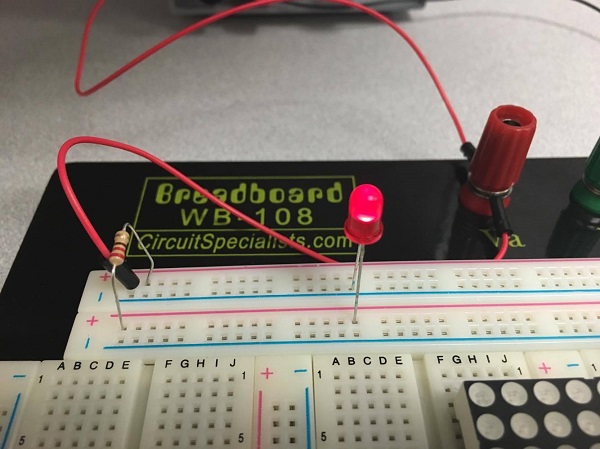
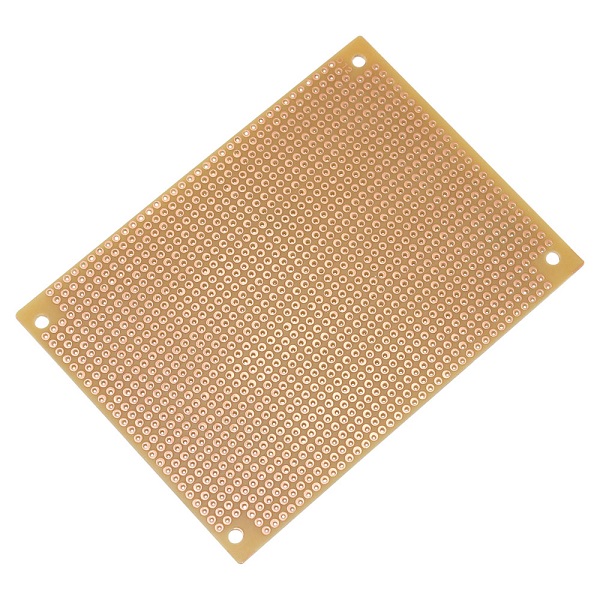
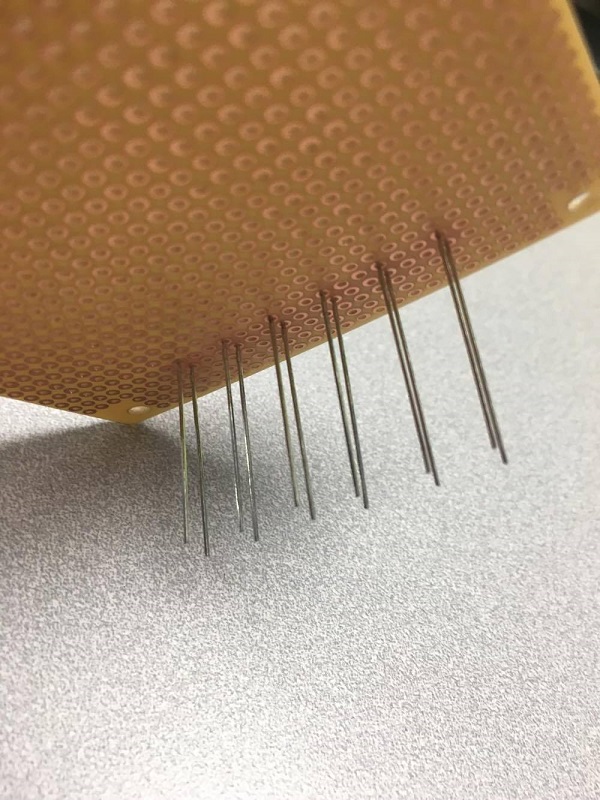
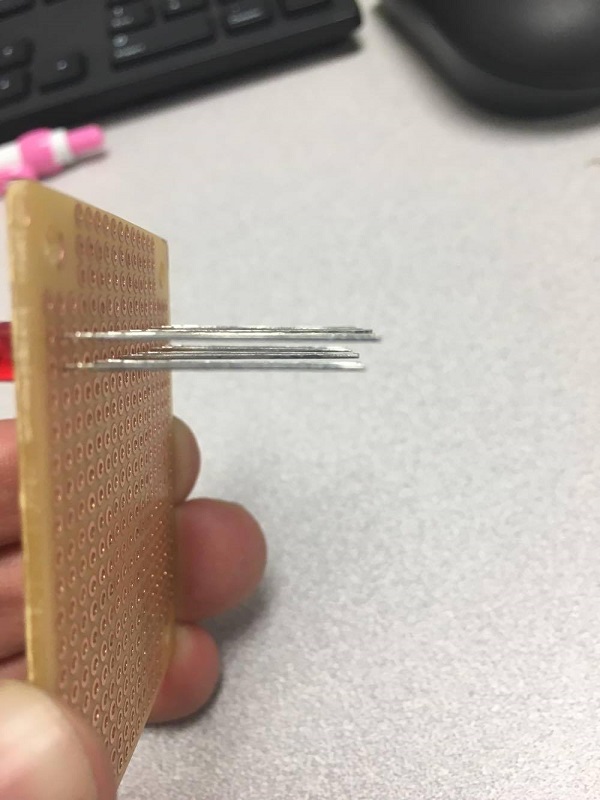
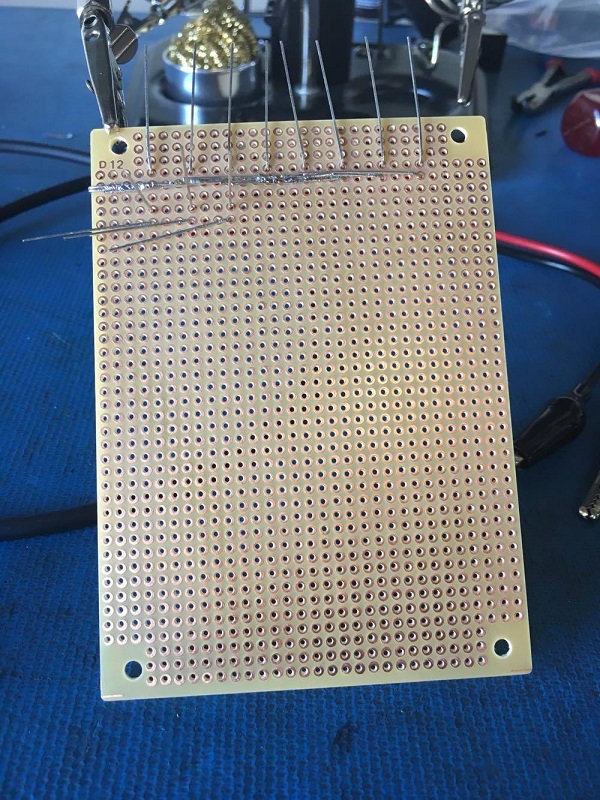
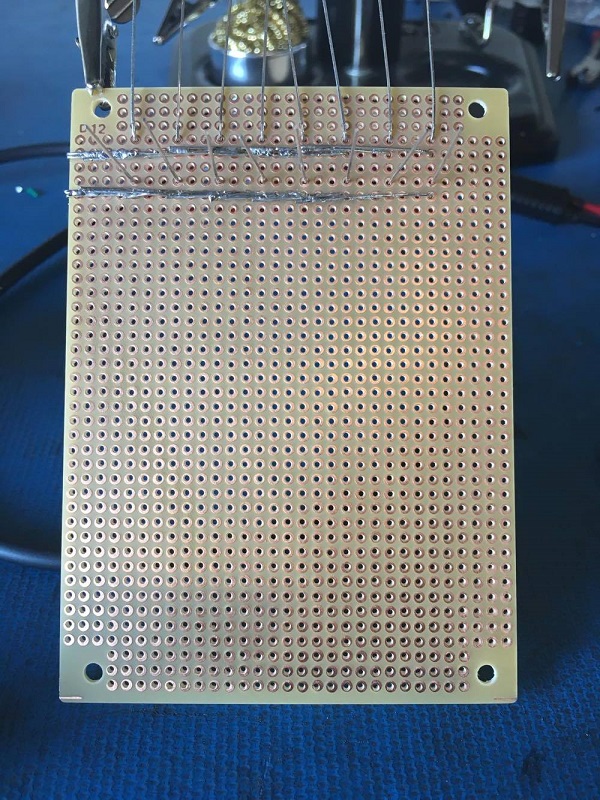
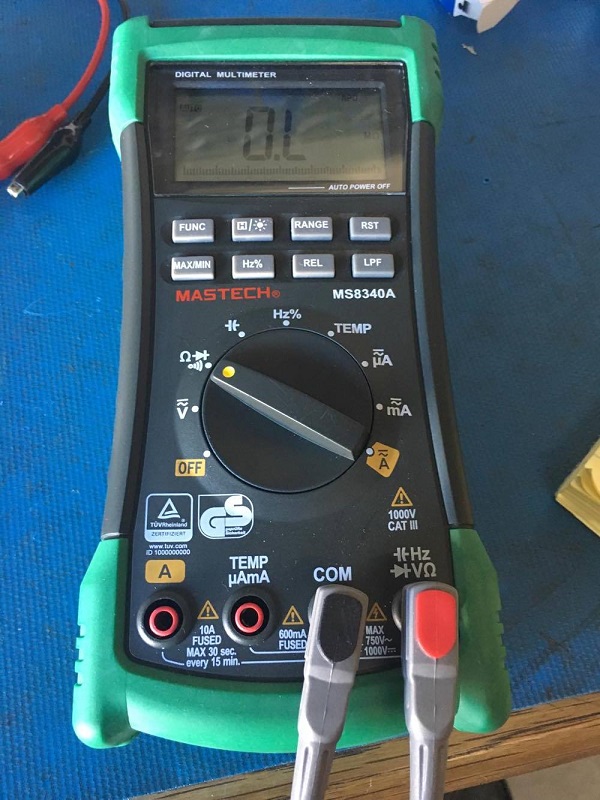 Leads set to each side of the row.
Leads set to each side of the row.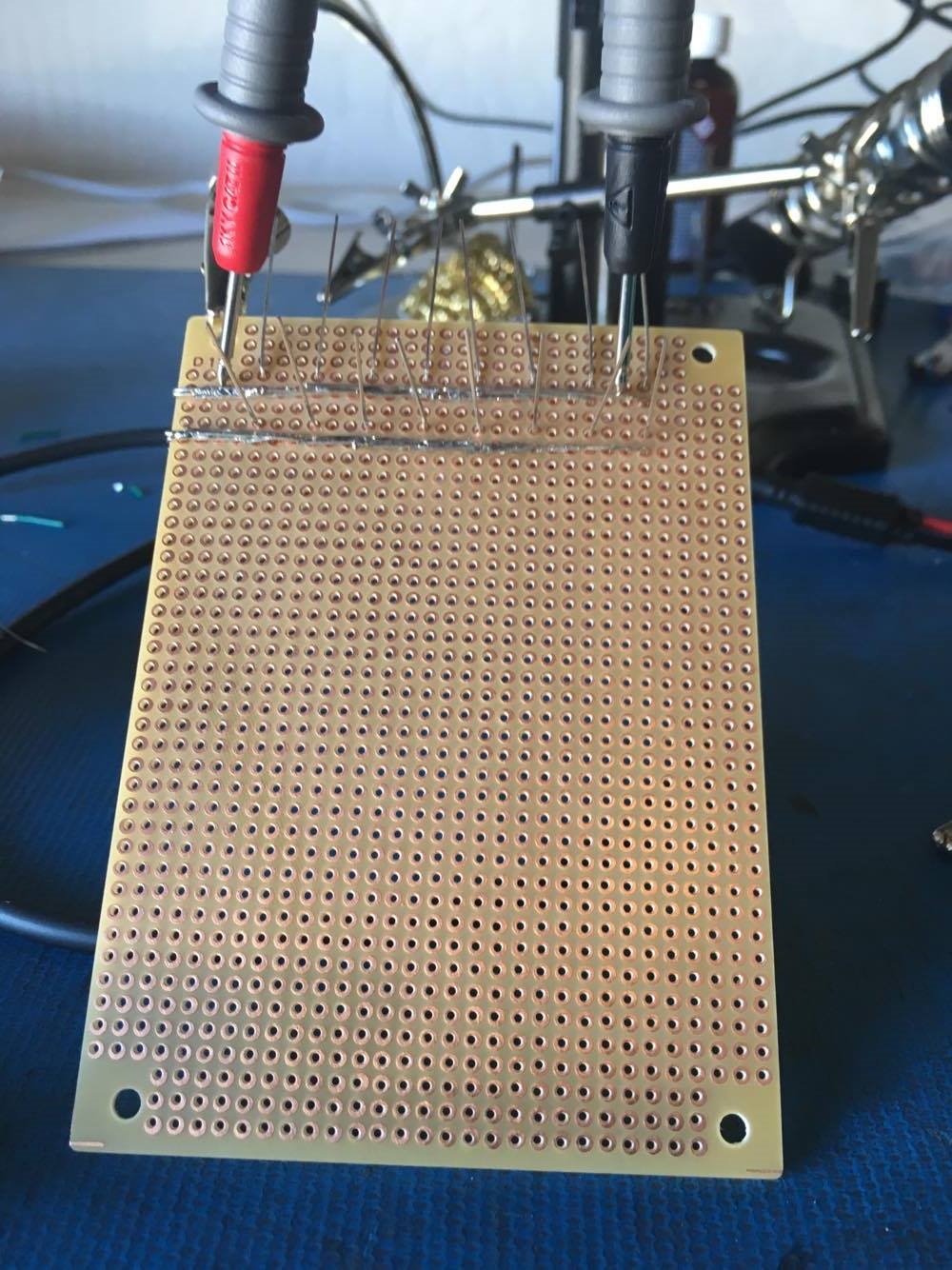
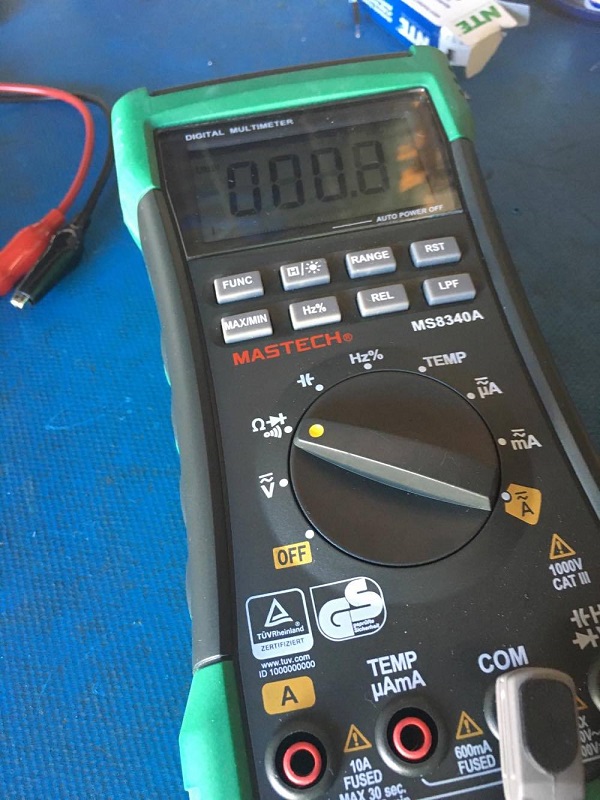
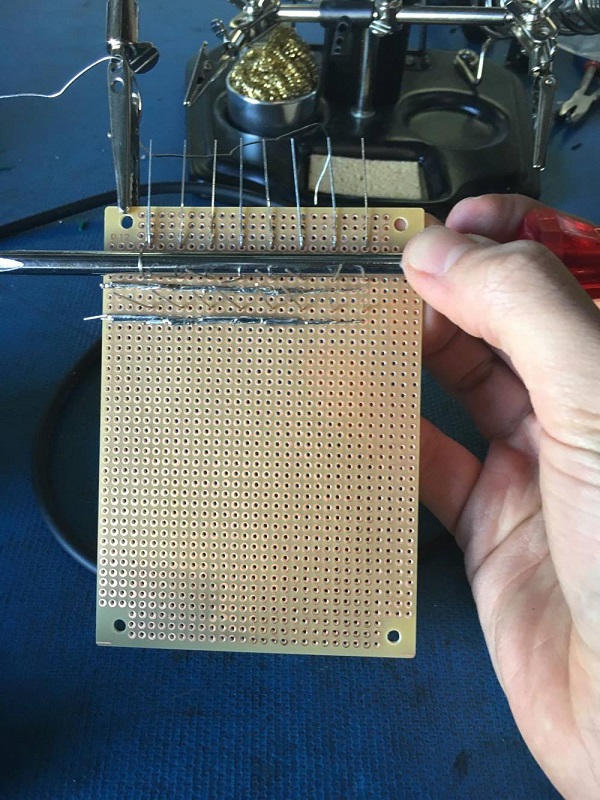
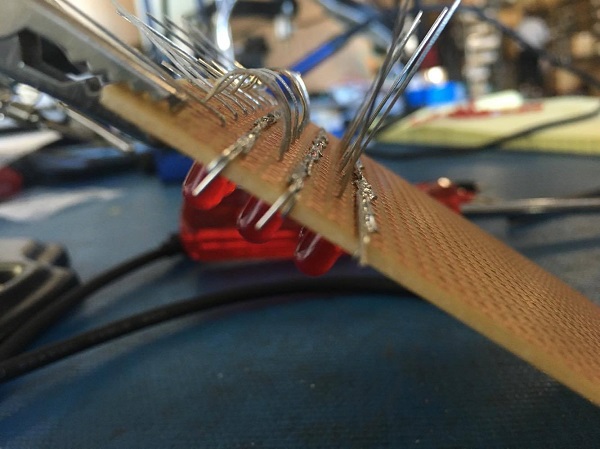
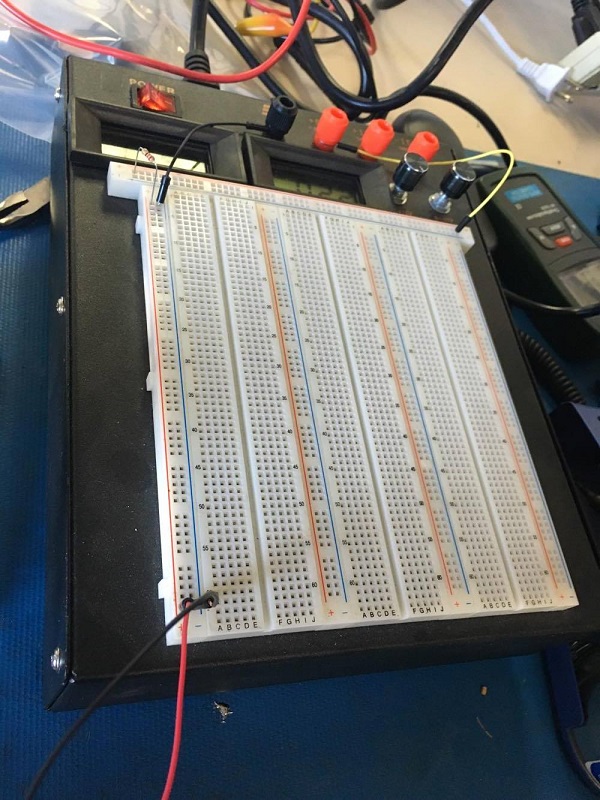
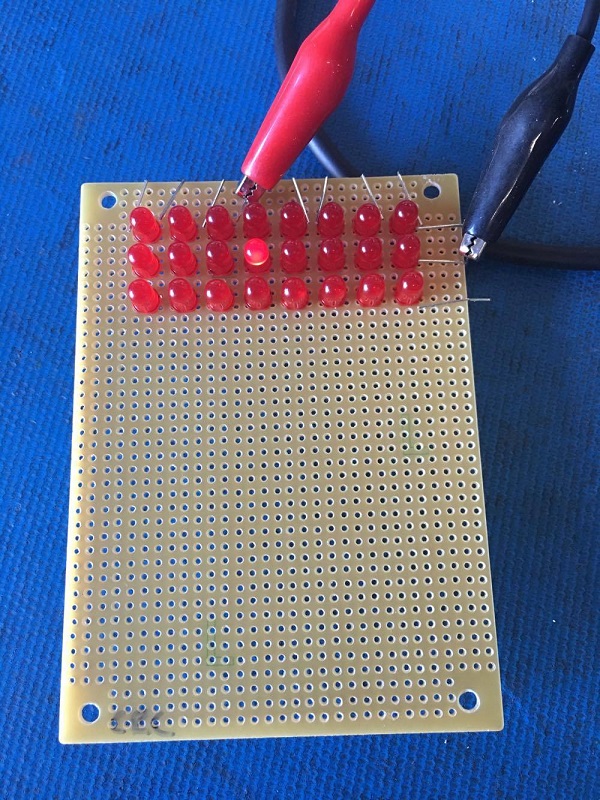
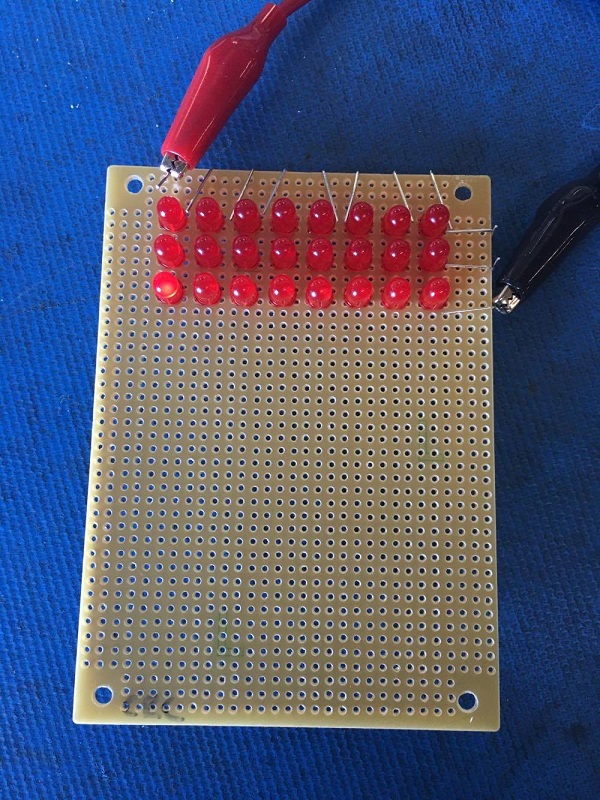
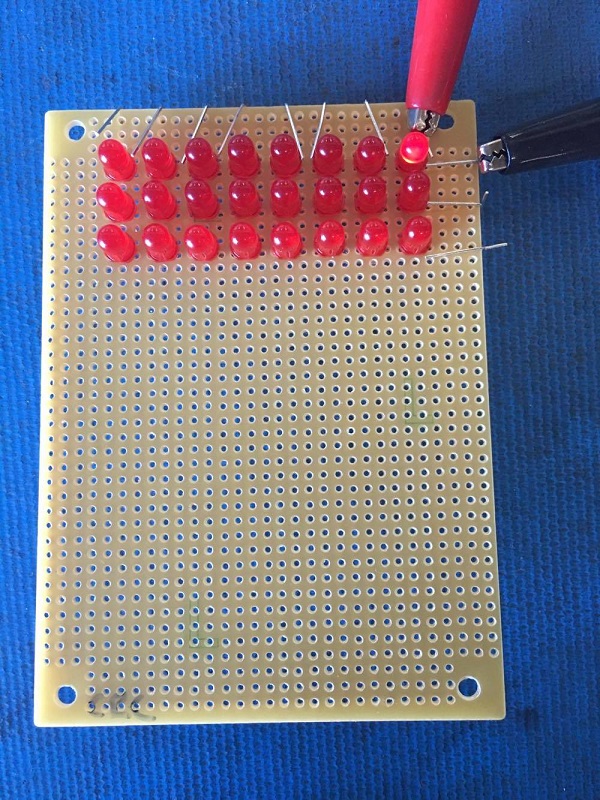
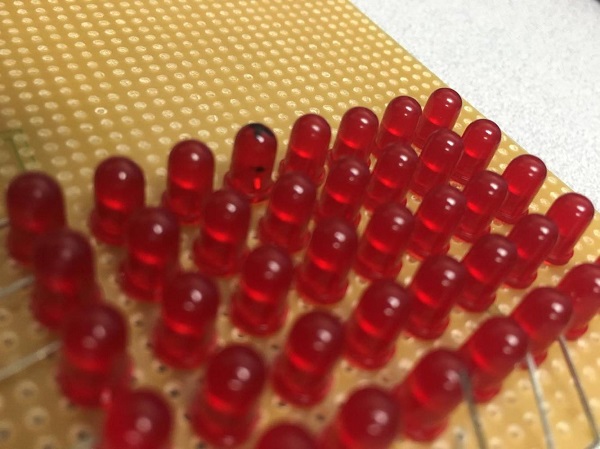
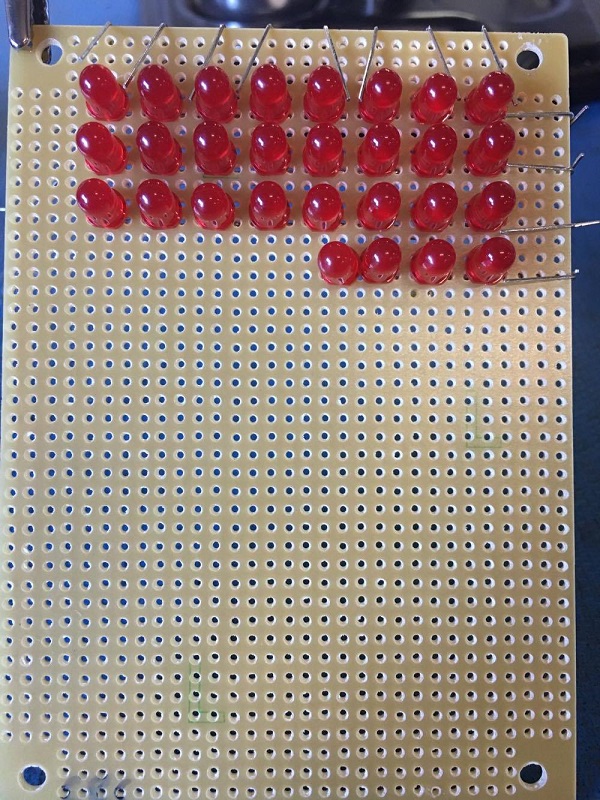
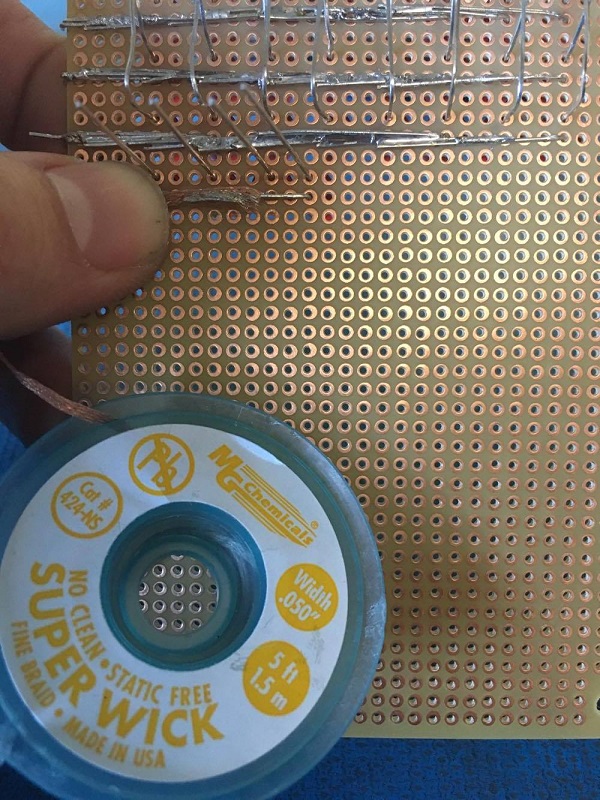
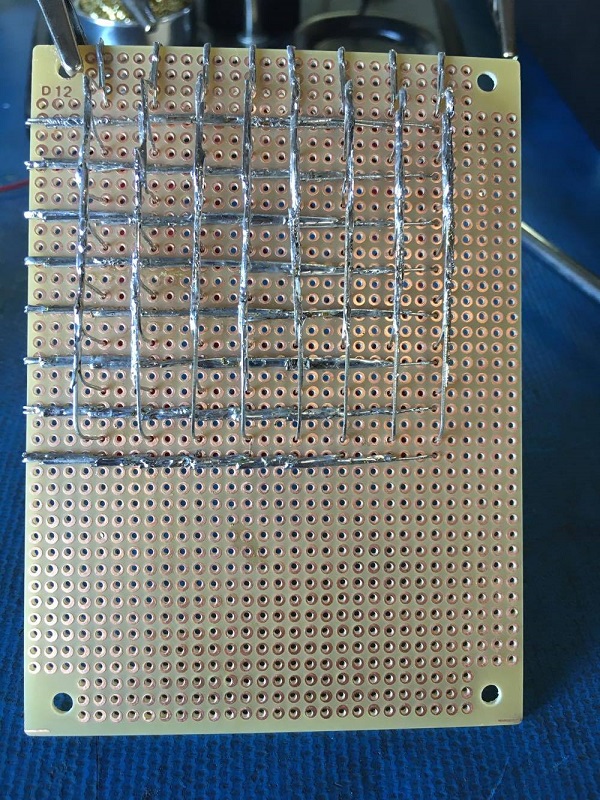
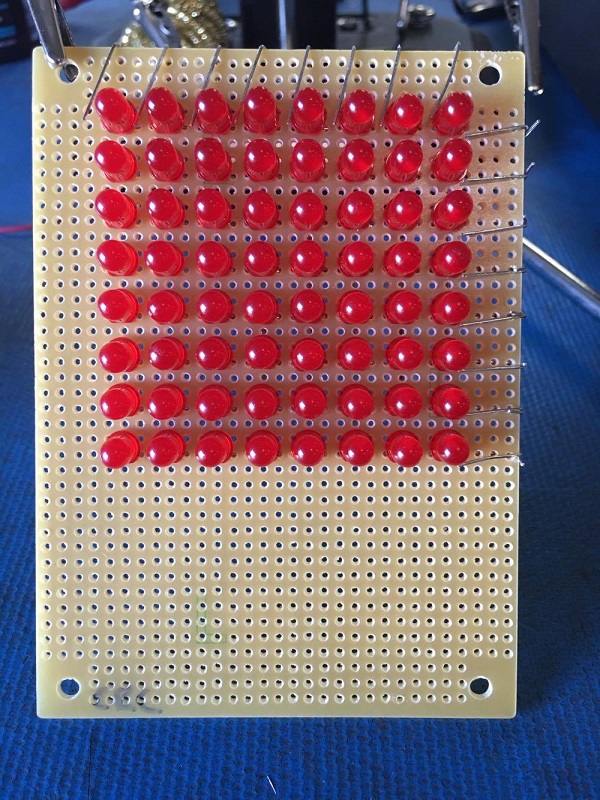
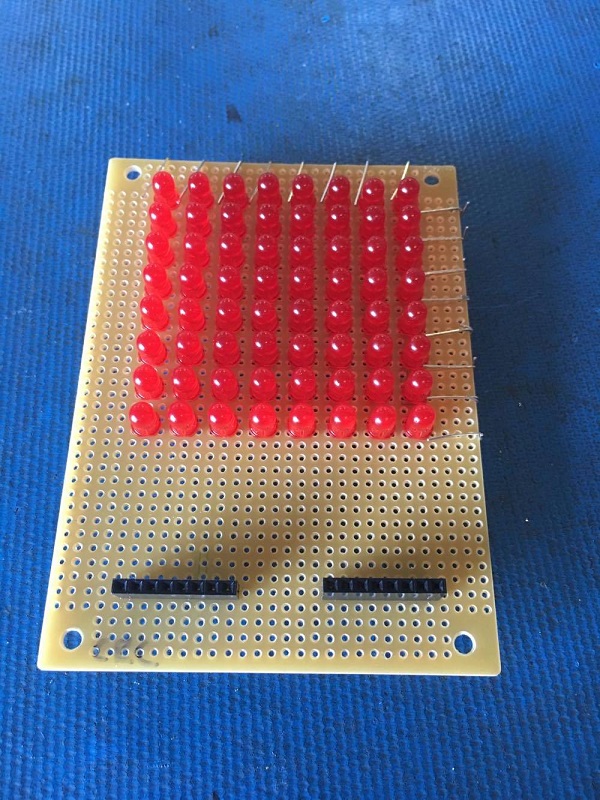 Then we’ll add some solder to keep the headers secure.
Then we’ll add some solder to keep the headers secure.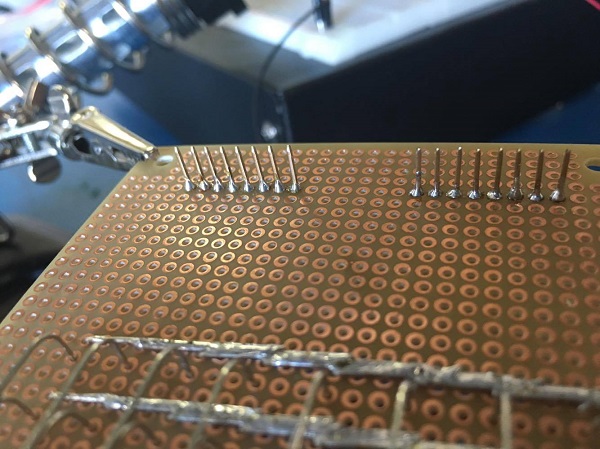
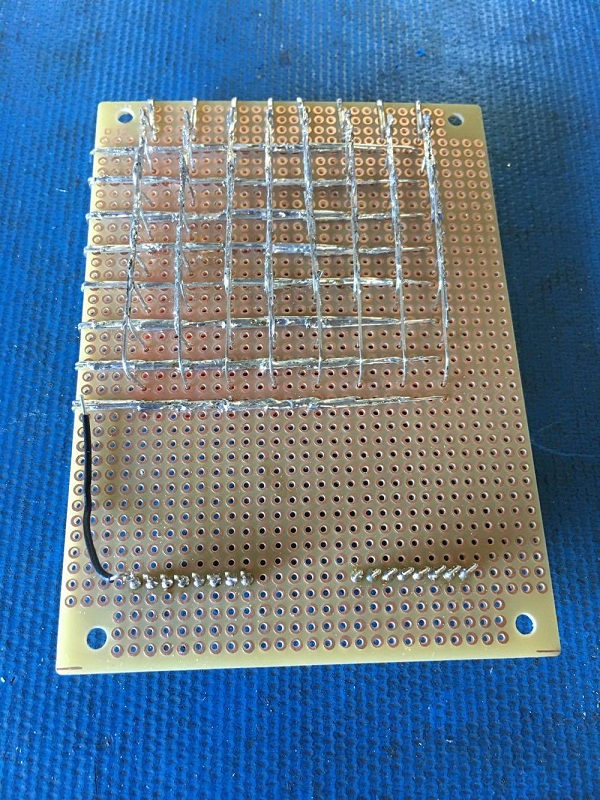
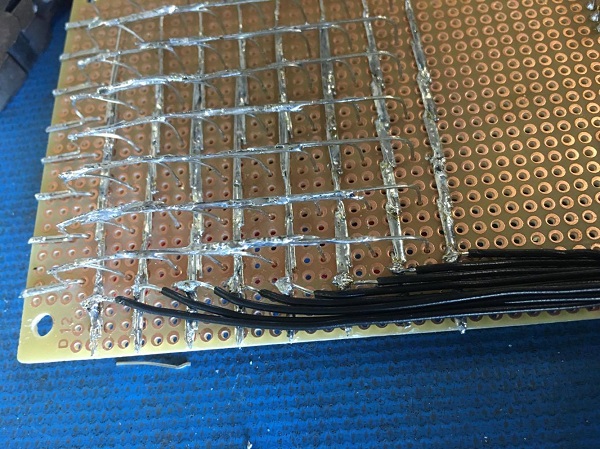 Now we’ll test our connections one by one.
Now we’ll test our connections one by one.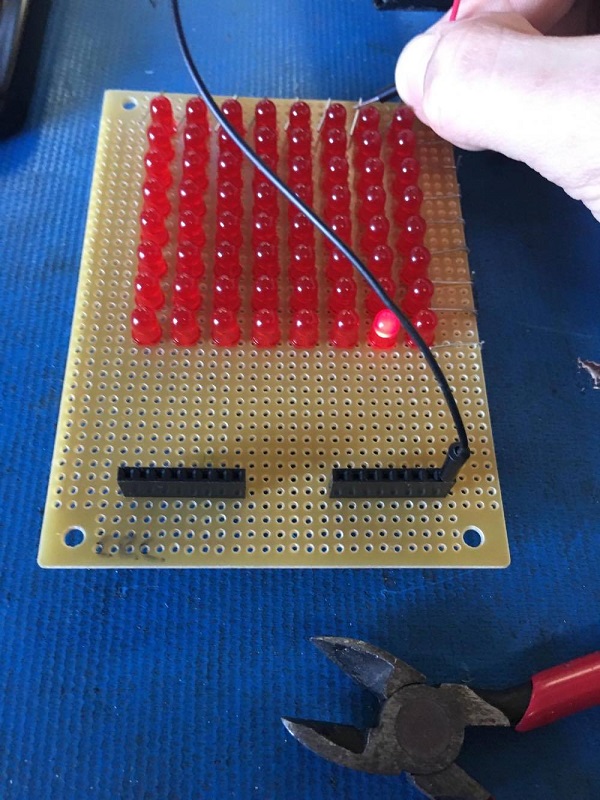
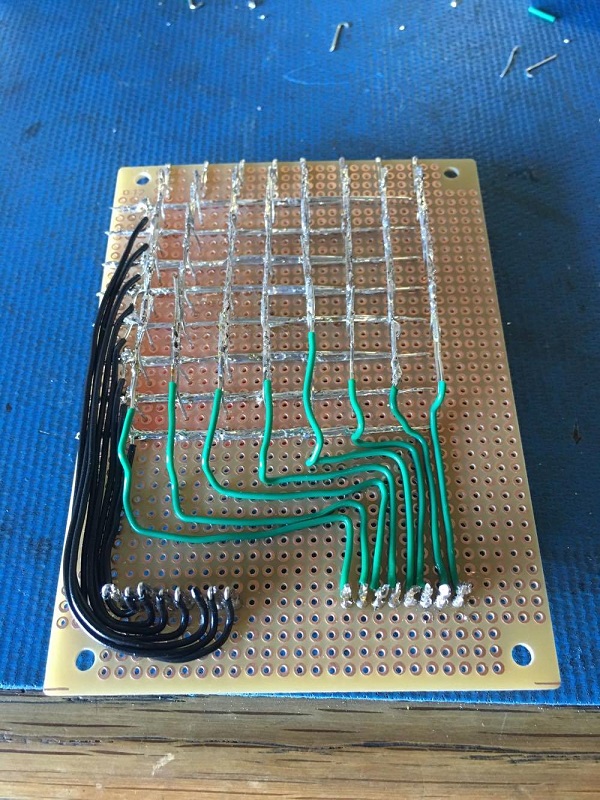
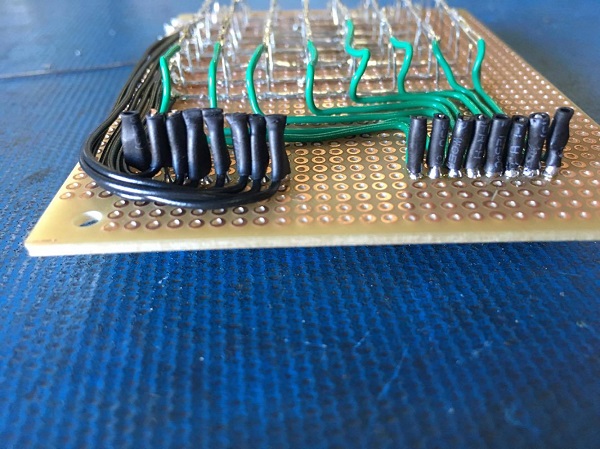
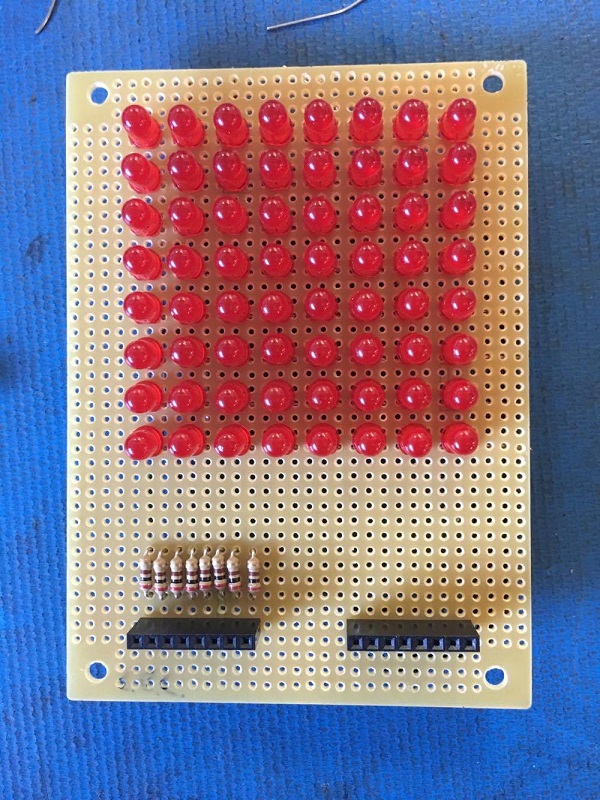
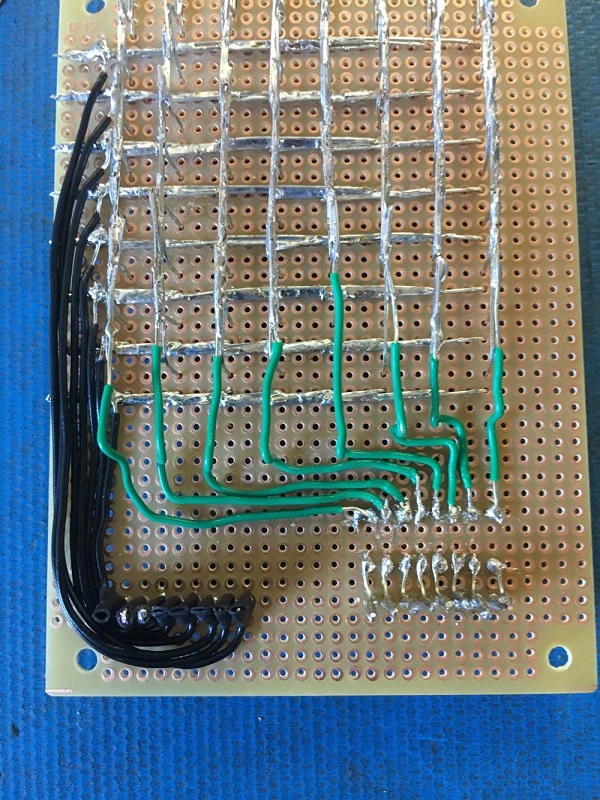
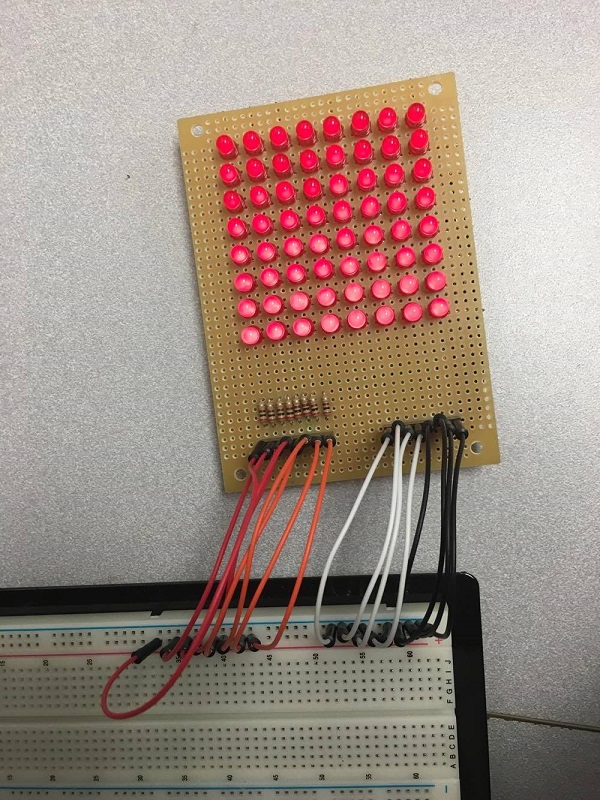
Monday, 12 February 2018
How capacitor works| Animation and analogy
How Capacitor works?
Animation and Analogy
The simplest capacitors
are big plates of metal close to each other but not touching. When connected to
a potential difference (e.g. a battery), the battery tries to push electrons
through the wire away from its negative terminal. Although there isn't a complete
circuit, you can imagine that you can shove a few extra electrons onto a big
sheet of metal . Let's face it, given the choice between being stuck at a
negative terminal or going to a neutral metal plate, electrons will get up and
move! So you get a flow of electrons to the plate i.e. you get a current
without a complete circuit, but only for a short period of time.
(Image: Capacitor works)
At the start the
capacitor is fully discharged.
When the switch is
closed, the capacitor is charged up from the energy stored in the battery until
the capacitor has the
same voltage as the battery. At first it charges up rapidly and then gradually
slows.
Open switch. The capacitor
remains fully charged.
Pushing the RESET button
short circuits the capacitor and the energy stored in the capacitor is now
discharged, slowly
at first. With small capacitors the energy discharge is very fast, almost
immediate.
With large capacitors,
this can take a long time.
This is why capacitors
are used in timing circuits.
Capacitor Analogy
Think of water flowing
through a pipe. If we imagine a capacitor as being a storage tank with an inlet
and an outlet
pipe, it is possible to show approximately how an electronic capacitor works.
First, let's consider
the case of a "coupling capacitor" where the capacitor is used to
connect
a signal from one part
of a circuit to another but without allowing any direct current to flow.
(Image: Capacitor passes AC
in coupling circuits)
If the current flow is
alternating between zero and a maximum, our "storage tank" capacitor
will
allow the current waves
to pass through.
(Image: Capacitor blocks DC
in coupling circuits)
However, if there is a
steady current, only the initial short burst will flow until
the "floating
ball valve" closes and stops further flow.
So a coupling capacitor
allows "alternating current" to pass through because the ball valve
doesn't
get a chance to close as
the waves go up and down. However, a steady current quickly fills the tank
so that all flow stops.
Now, lets think about
the De-coupling Capacitor
(Image: Capacitor bypassing
the AC in de-coupling circuits)
Where a capacitor is
used to decouple a circuit, the effect is to "smooth out ripples".
Any ripples, waves
or pulses of current are passed to ground while d.c. flows smoothly.
Weekly
-
How Capacitor works? Animation and Analogy The simplest capacitors are big plates of metal close to each other bu...
-
5 easy ways to earn money online faster 2017 E arning money o...
-
Learn how to make an 8x8 LED matrix controlled by an Arduino. Scroll down further for step by step photos and more details. You’ll ne...
-
Best apps released on 2017 This are the best apps where personally tested and posted on this webpage.This apps are the best in 2017.If ...
-
9 easy free Ways Increase YouTube Video Views If the goal of your video is to rack up YouTube views, you have some tough compe...
-
North korea new support : Russia will act with china & india to protect kim in ww3 Recently russia has given an news that there are g...
-
8 Game Hacker Apps for Android 2018 By Markhan Game Lovers??. Today is a lucky day for you. Because in this Post we a...
-
Whatsapp delete for everyone feature 2017 W hatsapp has introduced a new feature for that we are waiting for a ...
-
How to Download Amazon Prime Video on PC and Mac for free and easy With more and more excellent TV series, music and movies appearing o...
-
how resistor work? What is resistor? The resistor is an electronic component restricts or limit the flow of current and divide...



